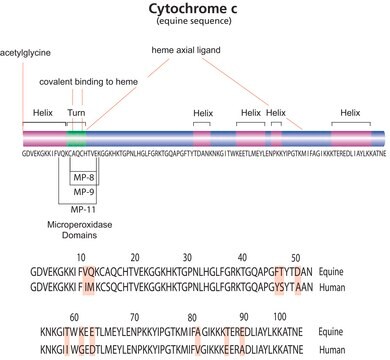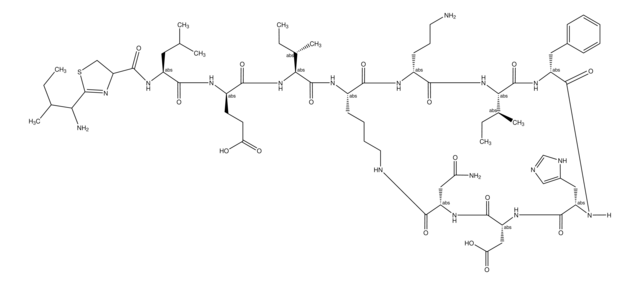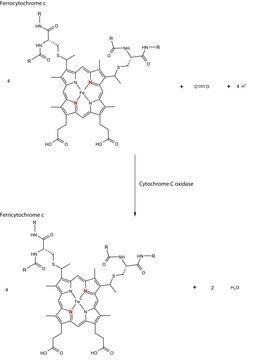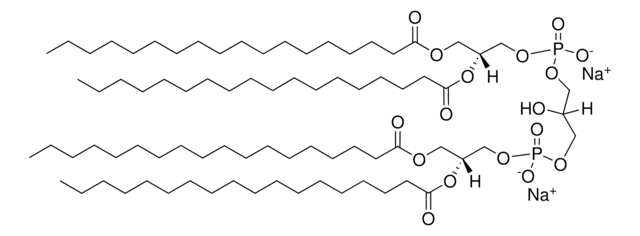Kluczowe dokumenty
C2436
Cytochrome c from Saccharomyces cerevisiae
≥85% based on Mol. Wt. 12,588 basis
About This Item
Polecane produkty
pochodzenie biologiczne
Saccharomyces cerevisiae
Poziom jakości
Próba
≥85% based on Mol. Wt. 12,588 basis
Postać
powder
masa cząsteczkowa
12,588 Da
metody
cell based assay: suitable
rozpuszczalność
water: 10 mg/mL, clear, red to red-brown (dark red)
numer dostępu UniProt
Zastosowanie
cell analysis
temp. przechowywania
−20°C
informacje o genach
Saccharomyces cerevisiae ... CYC1(853507)
Opis ogólny
Zastosowanie
Działania biochem./fizjol.
Jakość
Uwaga dotycząca przygotowania
Inne uwagi
Zastosowanie
Kod klasy składowania
11 - Combustible Solids
Klasa zagrożenia wodnego (WGK)
WGK 3
Temperatura zapłonu (°F)
Not applicable
Temperatura zapłonu (°C)
Not applicable
Środki ochrony indywidualnej
Eyeshields, Gloves, type N95 (US)
Certyfikaty analizy (CoA)
Poszukaj Certyfikaty analizy (CoA), wpisując numer partii/serii produktów. Numery serii i partii można znaleźć na etykiecie produktu po słowach „seria” lub „partia”.
Masz już ten produkt?
Dokumenty związane z niedawno zakupionymi produktami zostały zamieszczone w Bibliotece dokumentów.
Klienci oglądali również te produkty
Produkty
Learn about the four membrane-bound protein complexes that make up the electron transport chain metabolic pathway supplying energy as ATP for cellular respiration.
Chromatograms
application for HPLCapplication for HPLCapplication for HPLCNasz zespół naukowców ma doświadczenie we wszystkich obszarach badań, w tym w naukach przyrodniczych, materiałoznawstwie, syntezie chemicznej, chromatografii, analityce i wielu innych dziedzinach.
Skontaktuj się z zespołem ds. pomocy technicznej






